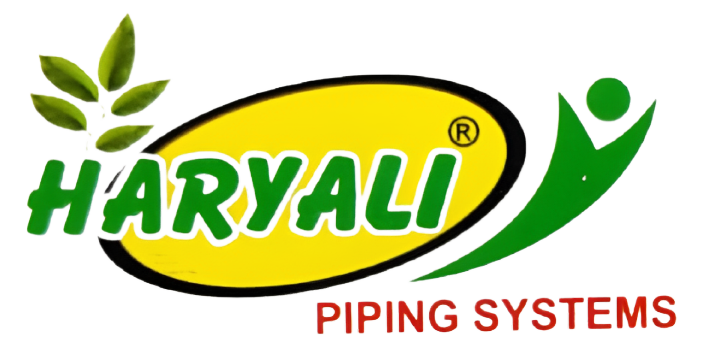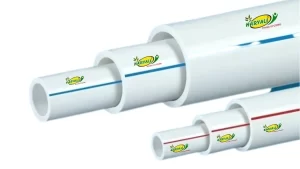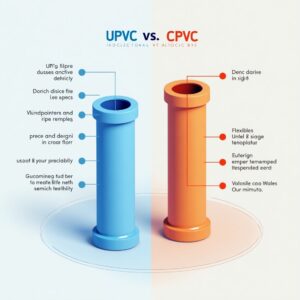At Polyshakti Pipe Industries, we understand the importance of selecting the right piping material for your construction or plumbing project. With various options available, it’s crucial to know the unique features of each to make an informed decision. Among the most popular pipe materials in the market today are uPVC, CPVC, and PEX. Though these pipes share some similarities, they have key differences that make them suitable for different applications.
In this blog post, we’ll dive into the core differences between uPVC, CPVC, and PEX pipes, helping you understand which is best for your specific needs.
1. uPVC Pipes (Unplasticized Polyvinyl Chloride)
Polyshakti Pipe Industries, located in Greater Noida, is a leading manufacturer and supplier of UPVC plumbing pipe. Their pipes are known for their durability, reliability, and high performance, making them a preferred choice among builders, contractors, and homeowners alike. Utilizing advanced manufacturing techniques and stringent quality control measures, Polyshakti Pipe Industries ensures that its products adhere to industry standards and exceed customer expectations. With a focus on customer satisfaction and product excellence, they continue to be a trusted name in the plumbing industry. With a commitment to quality and innovation, Polyshakti Pipe Industries produces a wide range of UPVC pipes tailored to meet various plumbing needs.
Key Features of uPVC Pipes:
- Durability: uPVC pipes are highly durable, resistant to corrosion, and can withstand high pressure. They are ideal for both cold and moderately hot water supply systems.
- Cost-effective: These pipes are generally more affordable than CPVC and PEX, making them a popular choice for budget-conscious projects.
- Applications: uPVC is typically used for drainage, sewer systems, irrigation, and cold water plumbing.
- Maintenance: Low maintenance due to their smooth interior surface, which reduces the buildup of debris and scales.
Pros:
- Resistant to chemical corrosion
- Lightweight and easy to install
- Long-lasting and low-maintenance
Cons:
- Not suitable for hot water applications
- Can become brittle over time when exposed to UV light
2. CPVC Pipes (Chlorinated Polyvinyl Chloride)
Polyshakti Pipe Industries is one of the best leading manufacturers and suppliers of CPVC pipes and fittings in India. Their CPVC pipes are known for their durability, corrosion resistance, and ease of installation, making them ideal for various applications in residential, commercial, and industrial settings. Backed by advanced technology and stringent quality control measures, Polyshakti Pipe Industries ensures that its products adhere to international standards, providing customers with reliable solutions for their piping requirements.
Key Features of CPVC Pipes:
- Temperature Resistance: CPVC pipes are designed to handle higher temperatures, up to 200°F (93°C), making them perfect for hot water distribution.
- Corrosion Resistance: Like uPVC, CPVC is resistant to corrosion, but it offers better protection against high-temperature corrosion.
- Applications: CPVC is commonly used in hot and cold water systems, industrial piping, and chemical handling applications.
- Flexibility: While still rigid, CPVC can be slightly more flexible than uPVC, making it easier to install in certain environments.
Pros:
- High resistance to heat and chemicals
- Can withstand higher pressure and temperature than uPVC
- Long-lasting and low-maintenance
Cons:
- More expensive than uPVC
- More prone to damage from UV exposure
3. PEX Pipes (Cross-Linked Polyethylene)
PEX pipes are made from a flexible form of polyethylene. They are gaining popularity due to their versatility and ease of installation. Unlike uPVC and CPVC, PEX is not a rigid pipe material, which offers unique benefits.
Key Features of PEX Pipes:
- Flexibility: PEX pipes are flexible and can be bent around corners, eliminating the need for many fittings and joints. This makes installation faster and more efficient.
- Temperature and Pressure Resistance: PEX can handle both hot and cold water, typically ranging from -40°F to 200°F (-40°C to 93°C). It also can withstand high pressure, making it suitable for both residential and commercial plumbing systems.
- Applications: PEX is widely used in residential water systems, underfloor heating, and radiant heating systems.
- Ease of Installation: The flexibility of PEX makes it easier to install, and it can be connected using simple push-fit fittings or crimp rings.
Pros:
- Flexible and easy to install
- Resistant to freezing (ideal for cold climates)
- Corrosion-resistant and durable
- Suitable for both hot and cold water systems
Cons:
- Requires UV protection (can degrade under direct sunlight)
- Not ideal for outdoor use without protection
- May be more expensive than uPVC for certain applications
Summary of Differences
| Feature | uPVC | CPVC | PEX |
|---|---|---|---|
| Temperature Resistance | Up to 140°F (60°C) | Up to 200°F (93°C) | -40°F to 200°F (-40°C to 93°C) |
| Pressure Resistance | Medium to high pressure | High pressure | High pressure |
| Flexibility | Rigid | Rigid | Highly flexible |
| Cost | Affordable | Higher than uPVC | Higher than uPVC and CPVC |
| Applications | Cold water, drainage, irrigation | Hot & cold water, industrial systems | Residential water systems, heating systems |
| Durability | Durable, but UV-sensitive | Durable, UV-sensitive | Durable, UV-sensitive, resistant to freezing |
Conclusion:
Choosing between uPVC, CPVC, and PEX pipes depends on your specific requirements:
- If you need a cost-effective solution for cold water or drainage systems, uPVC is an excellent choice.
- For hot water applications or systems that require resistance to high temperatures, CPVC is the superior option.
- If flexibility, easy installation, and resistance to freezing are your priorities, then PEX pipes are the ideal choice.
At Polyshakti Pipe Industries, we offer a wide range of uPVC, CPVC, and PEX pipes to suit all your construction and plumbing needs. Our pipes are manufactured to the highest standards, ensuring reliability, durability, and efficiency in every project.


